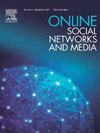How political symbols spread in online social networks: Using agent-based models to replicate the complex contagion of the yellow ribbon in Twitter
Q1 Social Sciences
引用次数: 0
Abstract
This paper analyzes the diffusion of the yellow ribbon in Twitter, a political symbol that represents the demand for the release of Catalan prisoners. We gathered data on potential users of the symbol in Twitter (users that publicly backed the cause), including their social network of friendships, and built an agent-based simulation to replicate the diffusion of the symbol in a digital twin version of the observed network. Our hypothesis was that complex contagion is the best explanation of the observed statistical relation between the proportion of adopting neighbors and the probability of adoption. Results show that the complex contagion model outperforms the simple contagion model and generates a better fit between the observed and the simulated pattern when the typical conditions of a complex contagion process are added to the baseline model, that is, when agents are affected by their reference group behavior rather than by the most influential nodes of the network, and when we identify a peripherical and densely connected network community and trigger the process from there. These results widen the set of behaviors whose diffusion can be explained as complex contagion to include adoption in low-risk/low-cost behaviors among people who would usually not resist adoption.
政治符号如何在在线社交网络中传播:使用基于主体的模型来复制Twitter中黄丝带的复杂传染
本文分析了黄色丝带在推特上的传播,这是一个政治符号,代表了对释放加泰罗尼亚囚犯的要求。我们收集了Twitter上该符号的潜在用户(公开支持该事业的用户)的数据,包括他们的社交网络,并建立了一个基于代理的模拟,以在观察到的网络的数字孪生版本中复制该符号的传播。我们的假设是,复杂传染是观察到的收养邻居比例与被收养概率之间的统计关系的最佳解释。结果表明,当基线模型中加入复杂传染过程的典型条件时,即当代理受其参考群体行为影响而不是受网络中最具影响力的节点影响时,当我们确定一个外围且紧密连接的网络社区并从那里触发该过程时,复杂传染模型优于简单传染模型,并在观察到的模式和模拟模式之间产生更好的拟合。这些结果扩大了行为的范围,这些行为的扩散可以解释为复杂的传染,包括在通常不会抵制采用的人群中采用低风险/低成本行为。
本文章由计算机程序翻译,如有差异,请以英文原文为准。
求助全文
约1分钟内获得全文
求助全文
来源期刊

Online Social Networks and Media
Social Sciences-Communication
CiteScore
10.60
自引率
0.00%
发文量
32
审稿时长
44 days
 求助内容:
求助内容: 应助结果提醒方式:
应助结果提醒方式:


